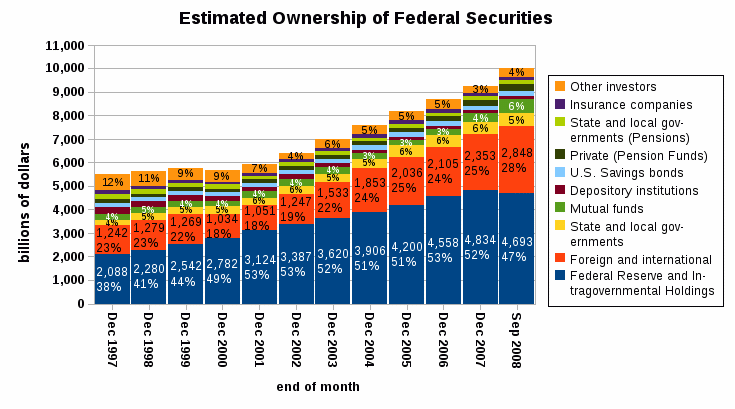America’s in a panic about Tuesday’s debt ceiling deadline (or maybe not).
Obama and the Democrats have once again painted the issuance of new debt as critical to keeping the sky from falling: raise the national credit card limit or else we’ll stop writing checks to grandma.
Not so.
The problem is that the national debt includes money the government owes itself and money it owes others. Only the latter puts a hard cap on spending. And all of the former can be freely spent by transferring it to the latter.
Here’s how it might work.
- Social Security owns a Treasury bond (in the “trust fund”).
- Social security redeems the bond, gets cash, and sends out its checks.
- The national debt is now lower. If the Treasury needs to, they can issue another bond and sell it to the private sector to raise cash.
How big a factor is this? Check out the chart:

The data is a couple years old, but the essential point is that the government can spend the blue area (and the yellow and green too, with a little difficulty) without changing the national debt at all: that’s about 2 years worth of our national budget.
The core takeaway is that the outlays part of the government is not in any immediate trouble. Outlays are only in trouble because outlayers want them to be in trouble.
House Republicans have drawn a line in (unimportant) sand, in the hopes of a confrontation. Democrats have accepted a confrontation that is optional for them at this juncture.
What’s the strategy behind that?
Duh: you fight when you want to because you think you’re more likely to win than if you wait to fight when you have to.
You see … Democrats know their progressive spending wishes are on the way out, unless they throw a hail mary and connect with it. The debt ceiling debate is just a sideshow. The real battle is painting Republicans as the bad guys.



